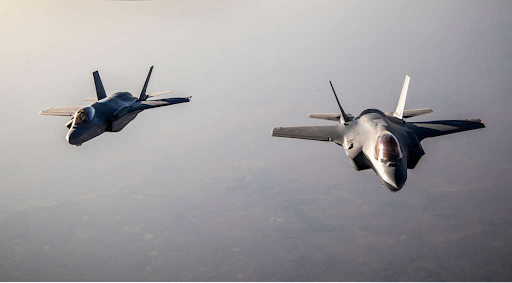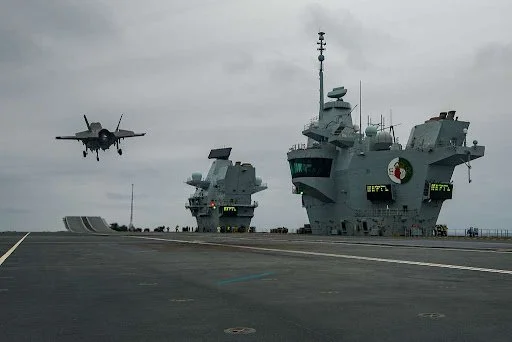Checking in on the F-35 Program
Two U.S. F-35As fly over Israel Photo: Duncan C. Bevan / US Airforce
The Lockheed Martin F-35 Lightning II is a multi-role, stealth combat aircraft that opens up the potential fors significant advances in military capability. The plane has three variants: the F-35A for conventional take-off and landing, the F-35B for short take-off and vertical landing, and the F-35C designed for use on aircraft carriers. The rollout of the program is well underway– with over 760 planes delivered, operations in nine countries, falling flight costs, and over 1500 pilots trained.
However, this progress has not come without a number of challenges.
In 2014, it was derided by Business Insider as “a historic $1 trillion disaster.” This characterization of the program was popular throughout the 2010s, with CNBC in 2014 writing in concurrence that “the F-35 Joint Strike Fighter is the most expensive, and possibly the most error ridden, project in the history of the United States military.” These assessments came after the program had gone $163 billion over budget and was running seven years behind schedule. Simple mistakes, such as wingtip lights that did not meet FAA standards and tire issues, plagued the program for years while political controversies loomed over the project’s estimated lifetime cost of $1.5 trillion.
The problems apparent in the F-35 program are not new for the Department of Defense. For example, the F-22 Raptor program faced decades of delays and cost $300 million more per plane than expected. Thomas Bound, of Harvard Law School, points to a number of structural problems with the Department of Defense’s acquisition process– such as the strict requirement and the technical risk associated with them that caused delays and increased cost in almost all major US programs.
Recently, the public’s perception of the F-35 program has been tarnished by several embarrassing plane crashes. On Jan. 24, a US pilot crash landed an F-35C on the USS Carl Vinson while conducting routine flight operations. This crash caused seven injuries and millions of dollars in damages, a blow to the legitimacy of the program. In another well-publicized incident, a British F-35B fell off the HMS Queen Elizabeth. This crash was reportedly caused by a rain cover getting sucked into the engine.
An F-35B taking off from the HMS Queen Elizabeth Photo: Dane Wiedmann / U.S Navy
Despite the many challenges with the program, the past few years have seen the F-35 program receive appraisal as it has been rolled out across the world. In 2021 the IDF put eight F-35s to use in a successful operation against Hamas. Overall, as the program was implemented it has seen improvements in its reliability and outperformed previous generations of aircrafts.
F-35 pilot Chris Spinelli described the experience of flying an F-35 as “extremely incredible” due to its stealth and survivability technology.
The future of the program looks promising. In 2021, countries throughout the US sphere of influence (such as Canada and Switzerland) added to their orders F-35s, and a number of other countries like Italy put their F-35s into service. In addition to the bolstered military capabilities that the F-35 program provides, control over arm sales is an important part of the US diplomatic strategy. The program is intended to last until 2070 and with the current rate of improvement, it seems likely to reach that goal.


